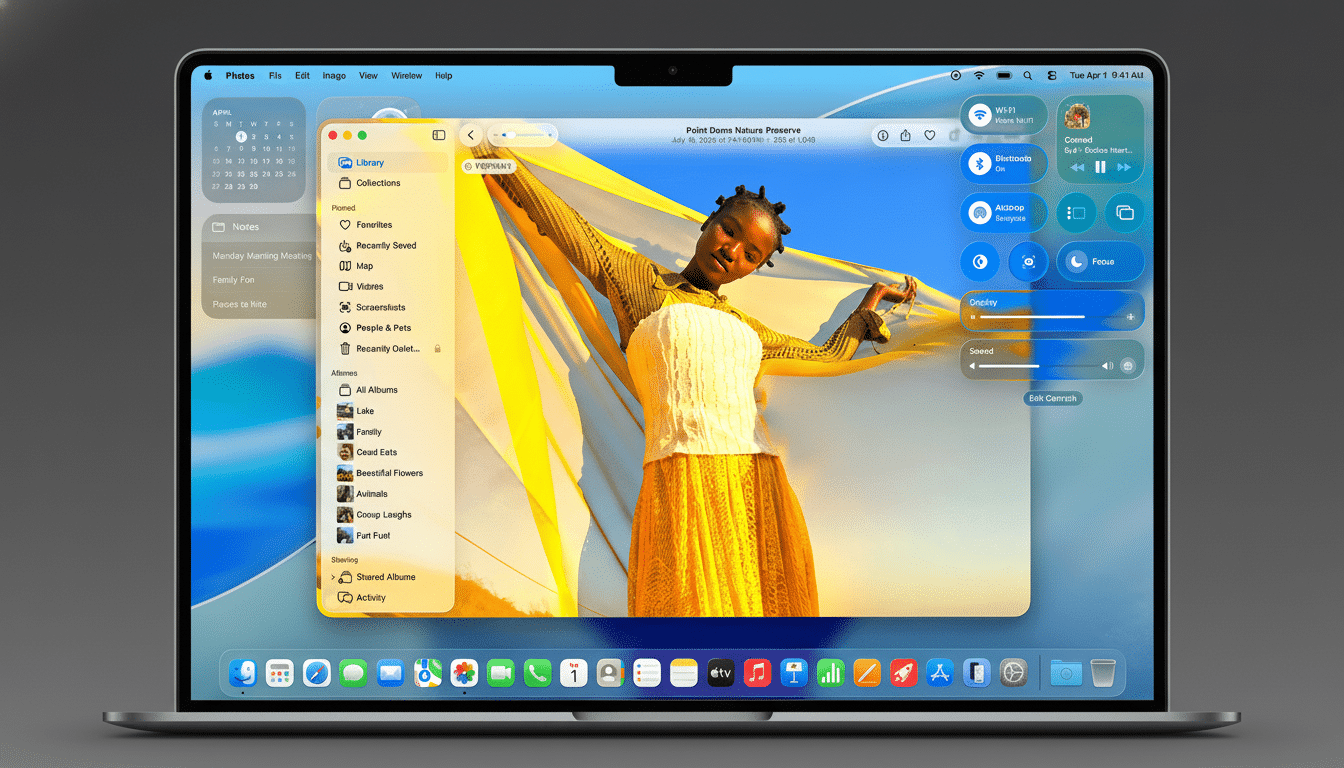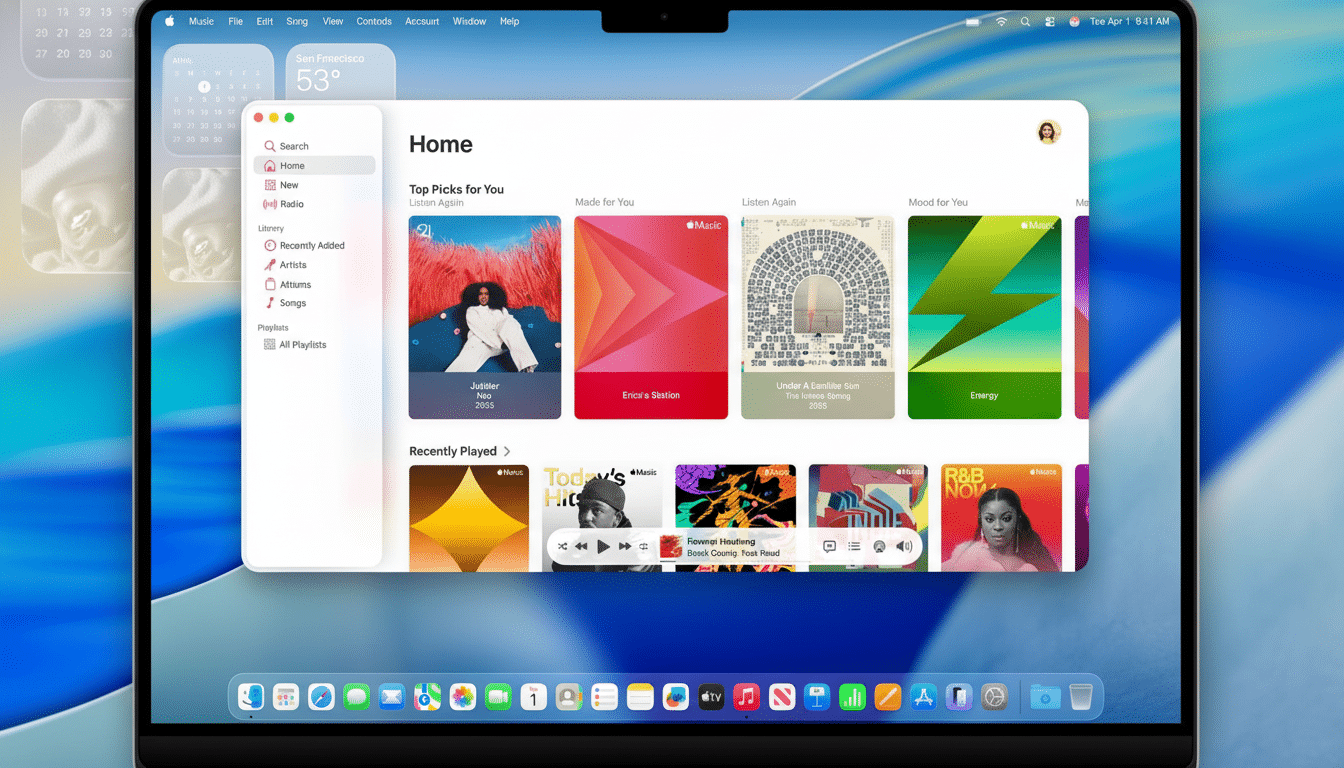Apple has seeded developers with macOS Tahoe 26.1 beta 4, a focused, incremental update that rolls up and leans into polish while unlocking one practical tweak to the platform’s marquee design. The release maintains the fast pace of post-launch betas and comes as Apple preps its next wave of M‑series MacBook Pro hardware.
Adjusting Liquid Glass transparency in macOS Tahoe
The biggest change in beta 4 is a new control for the Liquid Glass interface, Tahoe’s candy-coated, depth-first appearance style. As first reported by 9to5Mac, developers can change the amount of transparency this effect introduces, allowing users to have more say about how much translucency they’ll experience when looking at windows, sidebars, and menu materials.
- Adjusting Liquid Glass transparency in macOS Tahoe
- Bug fixes and small performance gains in beta 4
- Optimized for the next wave of MacBook Pro models
- How to install the developer beta safely on your Mac
- Tahoe’s design direction in context and accessibility
- Bottom line on macOS Tahoe 26.1 beta 4 improvements

Why it matters: Translucency is a looker, but not without an opinion. People who work in accessibility have warned for years that high transparency can lower contrast and legibility, particularly over busy wallpapers or complex app layouts. Even Apple’s own Human Interface Guidelines suggest that vibrancy be employed with care. A slider or toggle offers a middle ground, keeping the new design language while allowing people to dial in clarity, battery life, and comfort preferences.
For developers, this is a nudge to test out your custom UI against the different transparency levels. If your app uses layered backgrounds, consider testing with less Liquid Glass so foreground text, icons, and accent colors remain legible and pass contrast checks.
Bug fixes and small performance gains in beta 4
Alongside the design control, beta 4 is about stability. Apple’s developer notes mention “fixed search” in the Apple TV app, which is a small but noticeable fix that gives users less to complain about. The notes also allude to background process problems being fixed, which in practice could equate to fewer stalled sync jobs, more predictable notifications, and steadier battery usage.
Apple does not post granular performance deltas for betas, but these maintenance drops are generally aimed at compositing efficiency and animation timing. If you’re running the test on a Mac with integrated graphics, try watching Activity Monitor during windowing and Mission Control; reductions in transparency and theme‑y effect layers usually convert into slightly less load for your GPU when going about your multitasking business.
Optimized for the next wave of MacBook Pro models
Timing here is not accidental. Apple generally hardens WindowServer behavior, input responsiveness, and power management around beta 4–5 to be ready for new M‑series MacBook Pro models. Liquid Glass in particular scales best on high‑refresh ProMotion panels, where the blur and translucency prove to be more convincing at 120Hz. The new transparency control allows creators to dial back visual effects when doing pro workflows — like color grading, 3D previews, or during long compile sessions — without having to completely throw out the look of Tahoe.

Developers that ship creative or engineering tools should ensure full-screen and HDR behaviors are consistent across default and reduced transparency modes. It’s a pragmatic way to prevent visual artifacts on mini‑LED displays and maintain consistent UI chrome.
How to install the developer beta safely on your Mac
This release is currently available to members of Apple’s Developer Program. Back up your Mac completely before you install, preferably with Time Machine or a good snapshot. You may want to run this on a separate APFS volume and test it out first to mitigate risk. After you are enrolled, the update is available in System Settings under Software Update.
If you run into regressions — Bluetooth dropouts, display glitches, unexpected CPU spikes, whatever — file reports with Feedback Assistant and a diagnostic capture. Actionable feedback at this point can help Apple close off fixes for the upcoming point release.
Tahoe’s design direction in context and accessibility
The biggest swing on the eyes, Tahoe is Liquid Glass consolidating macOS’s look in line with Apple’s broader platform aesthetic — layered depth, bokeh effects, and material complexity. Beta 4’s transparency control is an admission that not every display, lighting condition, or user benefits from a one‑size‑fits‑all implementation. It’s a minor switch with outsize results and brings the design more in line with real‑world accessibility and performance requirements.
Bottom line on macOS Tahoe 26.1 beta 4 improvements
macOS Tahoe 26.1 beta 4 isn’t an eye‑catcher, but it does offer a real knob for Apple’s most visual design feature and tidies up everyday shots to the face. If you’re testing the developer build, make sure to test the new transparency setting, validate app contrast, and watch for better behavior of background blur. For the rest of us, though, these refinements are exactly the kind of subtle changes that make the next public update feel faster — read: swifter to open and deal with stuff in — clearer and more considered.

